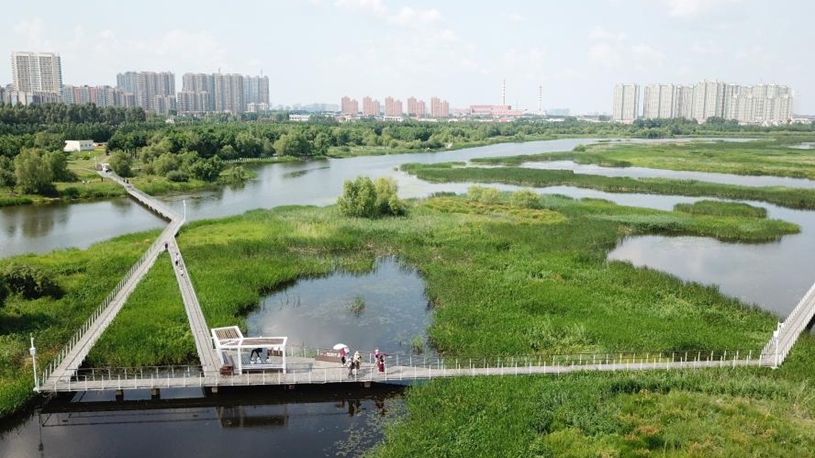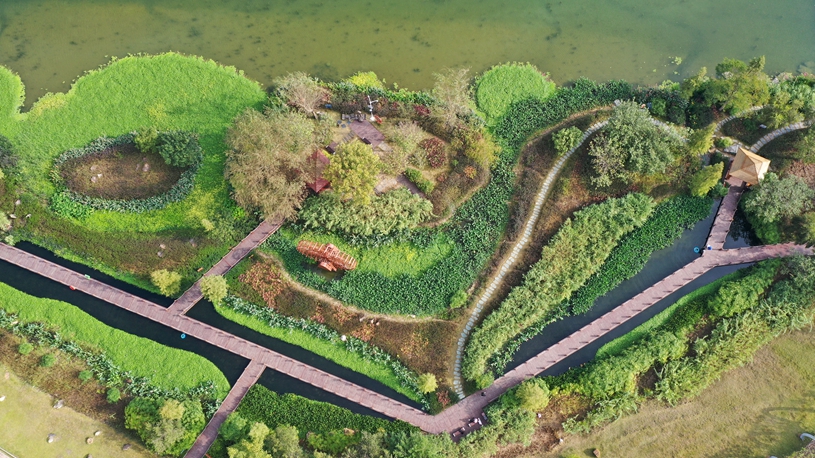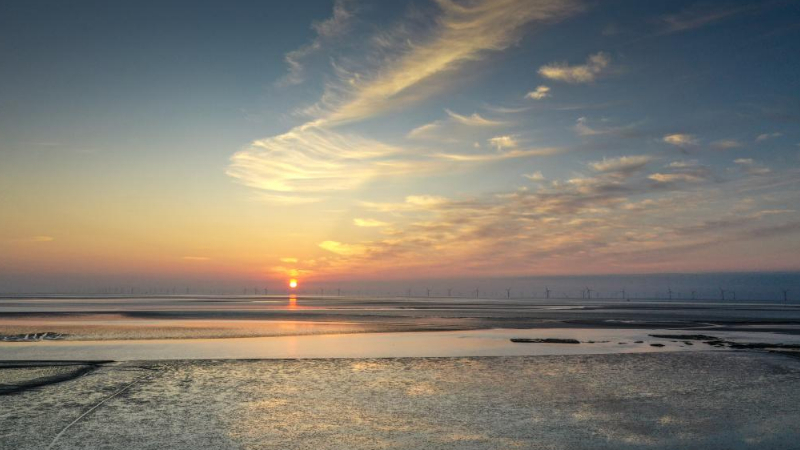
Photo taken on Aug. 8, 2022 shows a view of a dried-up river bed in Morgan Hill of California, the United States. (Photo by Li Jianguo/Xinhua)
A study showed that the U.S. West had spent the last two decades in the most extreme megadrought in at least 1,200 years. Meanwhile, researchers noted that human-caused climate change was a significant driver of the destructive conditions and offered a grim prognosis: even drier decades lie ahead.
LOS ANGELES, Nov. 18 (Xinhua) -- Moderate to severe drought extended from the U.S. West Coast to the Rocky Mountains with large areas of extreme and pockets of exceptional drought, the latest monthly drought report from the National Centers for Environmental Information said, while many residents in the West got much more nervous than those cold words.
"Our sagebrush there are all dried, all the weed and all what we have," Michael Badback, a 54-year-old man from the Ute Mountain Ute Tribe, told Xinhua on Sunday. "They're sagebrush. The roots go further and further down to get water, but they're not the same color like they used to be."
The Ute Mountain Ute Tribe is one of three federally recognized tribes of the Nuche, or Ute people. Their tribal lands comprise 2,500 square kilometers in southwestern Colorado, northwestern New Mexico, and small, isolated sections of Utah, where Badback's community is located.
According to U.S. Drought Monitor statistics, the area of the U.S. West experiencing moderate to exceptional drought was 73.5 percent at the end of October and the so-called Four Corners states, a region consisting of the southwestern corner of Colorado, southeastern corner of Utah, northeastern corner of Arizona, and northwestern corner of New Mexico, was suffering from the disaster the worst.
"Everything is dry and it's just hard to live," said Badback, who grew up in White Mesa, a rural community in southeastern Utah with about 300 Native American residents. "I know we have this climate change, but they are sagebrush, the last weed in thousand years and lived through longer drought."
Badback said that due to the drought which lasted for about 20 years in the West, many young tribe members had left the community which was built in 1950s and the population there had been decreasing year by year in the past two decades.
A study published this February by the University of California, Los Angeles (UCLA), showed that the U.S. West had spent the last two decades in the most extreme megadrought in at least 1,200 years. Meanwhile, researchers noted that human-caused climate change was a significant driver of the destructive conditions and offered a grim prognosis: even drier decades lie ahead.

The Anderson Lake is seen with low water level in Morgan Hill of California, the United States, Aug. 8, 2022. (Photo by Li Jianguo/Xinhua)
"We now know from these studies that is dry not only from the context of recent memory but in the context of the last millennium," said Park Williams, a climate scientist at the UCLA and the study's lead author.
Spencer Dill, a farmer living in western Colorado, was also familiar with the word "megadrought." He told Xinhua his hometown near the Rocky Mountains still had enough rain and snow and he heard many people recently moved from the south, including the Colorado River Basins and Grand Basin regions. More and more farmland and ranches became desert because of water shortage.
According to American Rivers, an influential river conservation organization based in Washington, D.C., mandatory cutbacks triggered by water shortage made states in the West lose a huge number of water supply. In Pinal County of Arizona alone, more than 500,000 acre-feet (616.7 million cubic meters) water was reduced.
Standing on the west bank of the Colorado River, a vital lifeline for the Southwest and the entire nation, near Hite Crossing Bridge in Utah, the spot where the biggest river in the West drains into Lake Powell, the second largest reservoir in the country, Dill muttered "it's really concerned."
He said the upstream part of the river runs through his small town and the news that the river flows are at historic lows emerged continuously. He drove a truck along the river for more than 60 hours to see what happened in downstream.

File photo of Glen Canyon Dam on Lake Powell in northern Arizona, the United States. ( Photo credit: The U.S. Bureau of Reclamation official website)
In the young man's eyes, the Lake Powell Reservoir is so low that the Hite area is just a river, with no signs of the reservoir anymore. Dozens of empty camping sites stood by the dried-up lake area, and a gas station for the recreation area was closed.
Including Hite, multiple Lake Powell launch ramps have stopped service due to low water levels. The latest data released Thursday showed that Lake Powell was 170.96 feet (52.1 meters) below full pool. By content, the lake is 23.77 percent of full pool.
"It's really concerned," Dill repeated to Xinhua, noting he knew that the Colorado River provides drinking water for 40 million people, irrigates 5 million acres of farm and ranch land, and supports economy activities involving 1.4 trillion U.S. dollars. The river serves the country's major cities such as Denver, Salt Lake City, Santa Fe, Las Vegas, Los Angeles, San Diego, Phoenix and Tijuana.
All of this is at risk due to rising temperatures and drought driven by climate change, combined with outdated river management and overallocation of limited water supplies.
"We are watching our bank account of water decline," Williams warned. "And we know that eventually we need to slow our expenditures before the account runs out." ■












